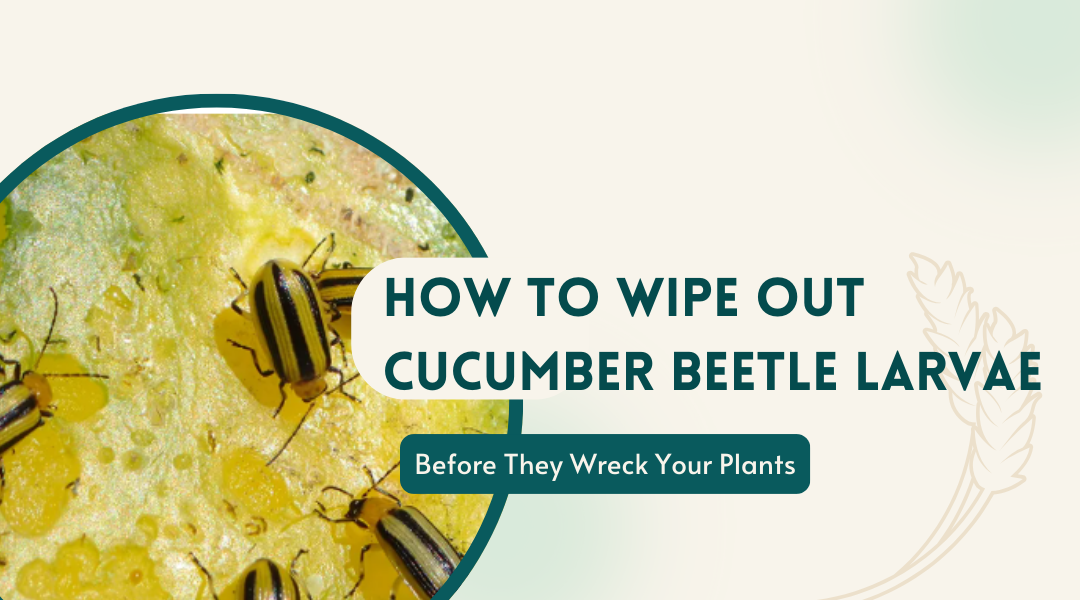Those yellow-striped jerks munching on your cucumber leaves? Their kids are worse. Hidden beneath the soil, cucumber beetle larvae feast on roots like tiny, hungry vampires—and by the time you notice stunted plants, the damage is done. But here’s how to fight back dirty (literally).
1. Play Musical Chairs With Your Crops
Beetles are creatures of habit. If you planted squash in the same spot last year, their overwintered larvae will wake up expecting an all-you-can-eat buffet. Throw them off by:
- Rotating cucurbits to the opposite side of the garden
- Planting this year’s zucchini where last year’s tomatoes grew
- Slotting in root crops like carrots or radishes as “gap year” plantings
Real-world tip: An Ohio market gardener swears by a 3-year rotation with a cover crop of buckwheat in year two—it starves larvae while improving soil.
2. Unleash the Soil Assassins
Nature’s hit squad works for free:
- Nematodes (the good kind): Mix Heterorhabditis nematodes with water and drench soil at dusk. They’ll hunt larvae like microscopic Jason Bournes.
- Ground beetles: Leave a patch of bare soil near your compost pile—these nocturnal predators devour hundreds of larvae nightly.
- Chickens: If you’ve got them, let hens scratch up post-harvest beds. They’ll turn larvae into protein snacks.
3. The Bake-Off Method (Solarization)
In peak summer when beds are empty:
- Water soil deeply
- Cover with clear plastic (black works too, but clear gets hotter)
- Seal edges with soil—let it “cook” for 4-6 weeks
The heat kills larvae and their eggs. Bonus: nukes weed seeds too.
4. The Diatomaceous Earth Gambit
This fossil dust is like walking on broken glass for soft-bodied larvae:
- Apply a fine layer when soil is dry
- Focus on plant bases and walkways
- Reapply after rain (it washes away)
Pro move: Combine with wood ash for extra alkalinity that beetles hate.
5. Trap Crops With a Twist
Blue Hubbard squash isn’t just bait—it’s a Trojan horse:
- Plant a few sacrificial squash 2-3 weeks before main crop
- When larvae appear in soil beneath them, drench with nematodes
- Uproot and bag the whole plant (larvae included)
6. The Midnight Disturbance
In fall, grab a flashlight and do this one weird trick:
- Turn over soil on the first frosty night
- Exposed larvae freeze or get eaten by birds
7. Mulch Like You Mean It
A 3-inch layer of:
- Straw (not hay—too many weed seeds)
- Shredded oak leaves
- Grass clippings (dried first)
…creates a physical barrier that confuses egg-laying adults and smothers emerging larvae.
The Big Picture
Last season, a Vermont grower combined solarization with nematode treatments and cut larval damage by 80%. The key? Hit them at every stage:
- Spring: Rotate crops + apply nematodes
- Summer: Solarize empty beds
- Fall: Turn soil + add mulch
Remember: Healthy soil grows resilient plants. Add compost regularly—strong roots can handle a few larvae nibbles while your countermeasures kick in. Now go show those underground invaders who’s boss.
